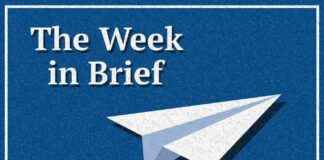California’s Dilemma: Police Chases vs. Bystander Safety
California has found itself at a crossroads, grappling with the delicate balance between law enforcement pursuits and public safety. The state’s Governor, Gavin Newsom, has been pushing for a tougher stance on crime, prompting Oakland to consider expanding police chases in response to public demand for a crackdown.
However, a recent incident in San Francisco highlighted the dangers of high-speed pursuits when a suspect’s vehicle crashed, resulting in six people, including a child, being hospitalized. This tragic event underscores the risks associated with police chases, with research revealing that a significant percentage of these pursuits end in collisions and injuries or fatalities.
The ongoing debate surrounding the escalation of police chases has brought to light the complex trade-offs involved in balancing the public’s call for stricter law enforcement with the potential risks to public health. Experts, including Geoffrey Alpert, a criminology professor at the University of South Carolina, have cautioned against loosening chase guidelines, citing the grave dangers posed by pursuing suspects for minor offenses.
Experts Weigh In on the Debate
Alpert, an authority on police pursuits, played a pivotal role in shaping Oakland’s policy, which currently only allows chases in cases involving violent crimes or suspects believed to be armed. He emphasized the life-threatening consequences of pursuing minor offenders, warning that such actions could result in tragic outcomes.
The Police Executive Research Forum, a prominent think tank on policing standards, recommended a more cautious approach to police chases, urging that pursuits be limited to cases where a violent crime has been committed and the suspect poses an imminent threat. This call for restraint underscores the need to prioritize public safety over apprehending suspects at all costs.
The Human Toll of Police Pursuits
The toll of police chases on innocent bystanders has been a cause for concern, with data indicating that thousands of people have been killed during chases that were not accounted for in federal records. The tragic loss of lives underscores the urgency of reevaluating pursuit policies to mitigate the risks posed to the public.
Alexis Piquero, a criminologist and former director of the federal Bureau of Justice Statistics, highlighted the inherent dangers of high-speed chases, emphasizing the need for a nuanced approach to chase policies. While acknowledging the potential risks involved, Piquero advocated for a balanced approach that considers the trade-offs between apprehending suspects and safeguarding public well-being.
The story of Kristie Priano, a 15-year-old girl who lost her life in a police chase in 2002, serves as a poignant reminder of the human cost of pursuing suspects. Her tragic death prompted her family to advocate for stricter pursuit regulations, culminating in the unsuccessful push for Kristie’s Law, aimed at limiting chases to situations of imminent peril.
In conclusion, the ongoing debate over police chases in California reflects a broader national conversation on the delicate balance between law enforcement objectives and public safety. As policymakers grapple with the complexities of pursuit policies, the need to prioritize human life and well-being remains paramount. The lessons learned from past tragedies underscore the critical importance of striking a careful balance between effective law enforcement and safeguarding the public from unnecessary harm.

















